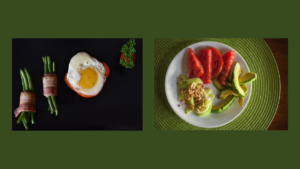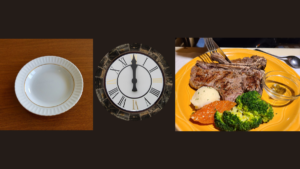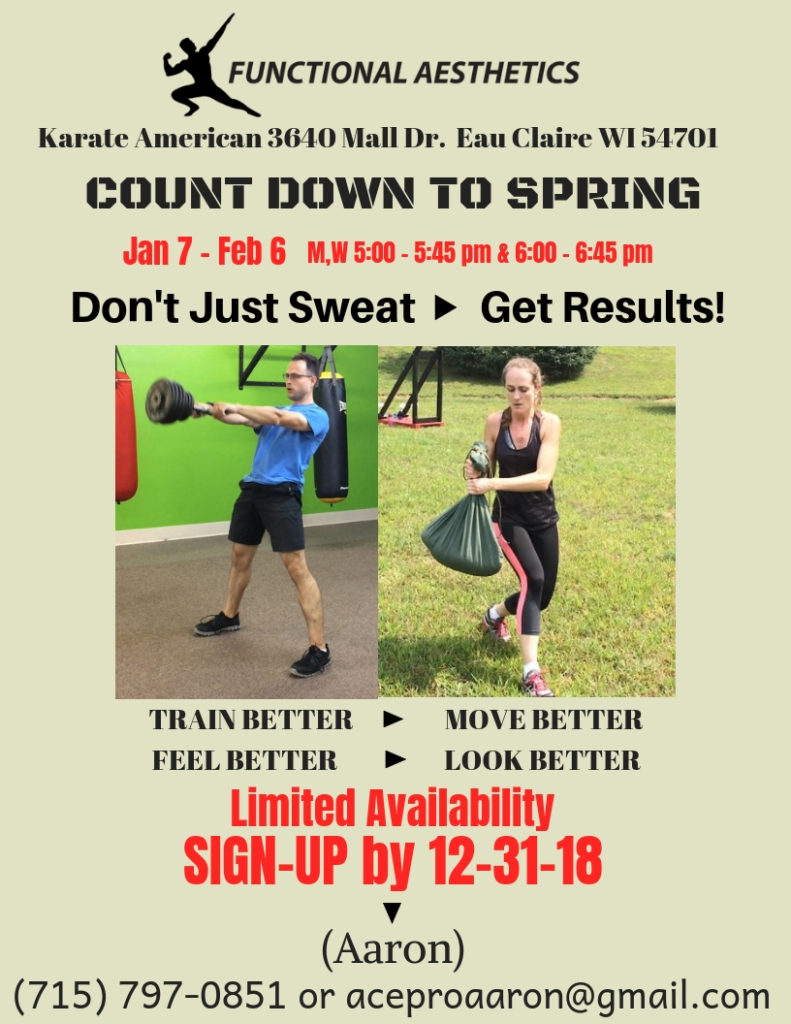What the heck is set point weight??? If you have cleaned up your diet and increased your workout frequency, volume and or intensity and yet you can’t seem to make the needle on the scale budge you may have reached your set point weight.
Your “SET POINT” weight is the weight and body fat percentage that your body naturally wants to maintain this is predicted by genetics and we have little control over it. Or do we?
Our bodies work hard all day to maintain a stable internal environment by adjusting hormones, temperature and energy levels etc. throughout the day.
When it is hot and humid out our bodies will begin to sweat to maintain our internal body temperature and prevent us from overheating. Similarly, when we cut calories drastically or dramatically ramp up our exercise volume our body will resist and try to maintain homeostasis by slowing down energy expenditure resulting in slowed weight loss and decreased energy.
There is a way around this however. The following are TEN TIPS to help you ADJUST your SET POINT.
- DON’T LOSE WEIGHT TOO QUICKLY
Unless you are severely obese in which case you will have an easier time losing weight do not try to lose more than about a ½ pound to a pound/week. It sounds cliché, but you did not gain the weight overnight so don’t expect to lose it overnight. Only slightly decreasing calories and increasing energy expenditure you will help you stick with the plan and also help you maintain your weight loss without making yourself so miserable that you rebound and binge on everything in sight. You will also ensure that you have enough energy to push hard in the gym and it will help prevent metabolic slow down.
- FOLLOW THE 5-10% RULE
This tip ties into the following one. In general, do not try to lose more than 5-10% of your weight in one push. As mentioned above when we try to make to big a leap our body will fight back and make it harder for us to lose weight. I inadvertently discovered this years ago when I was struggling with digestive problems. Eating made me feel sick and nauseous so I tried to do it as little as possible. Eventually however, I would have a binge day. Because I was eating so little the majority of the time, I could not fit much food in my stomach and this binge was not enough to make up for the lack of eating the rest of the week or month. Additionally, I would feel so gross and bloated after this meal that I did not want to touch food again for quite a long while and so the cycle would continue. I discovered that each time I would binge after a period of minimalist eating the subsequent week, I would get even leaner. I eventually was measured at 7% BF in a hydrostatic weighing tank at the University of Lacrosse. The point here is that if you cut calories for a few weeks and then bring them back to maintenance every week or two it will prevent your body from adapting and stalling your weight loss.
- DON’T TRY TO LOSE OR GAIN WEIGHT INDEFINITELY
Dieting is stressful to the body. Stress Releases Cortisol = lower Insulin sensitivity and increased fat storage. Hour long cardio sessions are also stressful and prone to elevating Cortisol. For this reason, it is wise to focus on weight loss for a few months and then take a few months off where you focus on maintaining that weight loss before you make a push to lose more.
FOR EXAMPLE: If you are systematically reducing calories over six to 12 weeks you would then want to gradually begin increasing calories back up to maintenance over the next 6-12. The same goes for your cardio routine. Increase from the bare minimum of say 10 minutes to 60 minutes over a 6-week period and then gradually reduce back to 10 minutes before ramping it up again. The next TIP is critical in order for this TIP to work.
- PUMP SOME IRON
Muscle is more metabolically active than fat tissue meaning that it requires energy just to be maintained not to mention the energy burned while working out. For this reason, it is critical that you prioritize strength training in your quest to get lean. Focus on Compound movements such as Squats (All Variations), Dead Lifts, Pull-ups, Chin-ups, Push-Ups/Bench Press, Over Head Pressing and if you have the technical skill Olympic Lifts such as the Power Clean, Jerk and Snatch are all great movements to not only burn a lot of calories, but also help you build or maintain your muscle while you are dieting. Save the biceps curls and triceps push-downs, lateral raises and ab exercises for the end of your workout when you are more fatigued.
- TRACK WHAT YOU EAT
If you do not know what you are doing, how can you know what made you succeed or fail? This goes for life in general, but in the case of fitness if you don’t know what you are eating how do you know if you are on point to reach your FAT LOSS or MUSCLE BUILDING GOAL? Know what you are eating and experiment to find what is working or what is not working by making small changes as you go. These days it is EXTREMELY easy to do this with fitness APPS and CALORIE TRACKERS such as My Fitness Pal. When I started, I used a spiral notebook and wrote out everything by hand every day. After a couple of years of this you get so good you can simply eyeball something and know the approximate macronutrient breakdown.
- MIND YOUR GUT HEALTH
Research has shown that probiotics or (Healthy Bacteria in your Gut) can aid in weight loss as well as slightly decrease BF%. However, this is not the main reason you should take a Probiotic Supplement. Keeping your gut healthy will allow you to absorb more nutrients from your food leading to greater energy, focus, improved mood and vitality. If you are plugged up or eating a diet high in processed sugars and grains you are aiding in the proliferation of HARMFUL GUT MICROBES. I know from experience just how detrimental this can be to your health overall.
- NO GYM? THAT’S NEAT
N.E.A.T. stands for Non-Exercise Activity Thermogenesis. A FANCY way of saying burning calories without intentionally working out simply by moving around more throughout the day whether that be doing laundry, taking the dog for a walk, taking the stairs at work, playing with your kids, gardening or other household chores. It all adds up and what’s more can help you keep your stress levels down which will contribute to losing fat more easily. Not all exercise needs to be HIGH INTENSITY.
- STRESS LESS
As I have eluded to earlier in this post, STRESS is not your friend when it comes to BUILDING MUSCLE or LOSING FAT. When you are stressed your stress hormone CORTISOL is stimulated triggering the release of a large amount of sugar into your blood stream. This ultimately causes a spike followed by a crash increasing hunger and sugar/carbohydrate cravings. If you are not also doing exercise to use this increase in calories you will end up storing fat and decreasing your INUSLIN SENSITIVITY.
While it is good to have a plan and to strive to be consistent with it. Beating yourself up for CHEATING on your diet, or MISSING a workout or overanalyzing your workout and diet regimen will ultimately do more harm than good. The GOAL is not PERFECTION, but rather making small CONSISTENT changes over time that lead to SUCCESS. Aside from working out, be discriminant in what you allow to GET A RISE out of you. Not everything is worth your TIME and ENERGY.
- TAKE YOUR REST SERIOUSLY
Everybody knows that sleep is vitally important for mental and physical well-being, but it makes a HUGE DIFFERENCE when it comes to your fitness goals. When you sleep your body produces Melatonin which is a powerful antioxidant. If you have aches and pains in your joints from heavy lifting, or running simply sleeping more can help get rid of this.
So, we all know how important sleep is. However, the problem is that some of us have difficulty getting enough of it. Just as with fitness you need to prepare for sleep. Know how your body operates and create an environment conducive to achieving your sleep goals.
- MAKE A PLAN
This goes hand in hand with the section on KEEPING A FOOD LOG. Before you go to the gym, know what you are trying to achieve and CREATE a preliminary plan to achieve that goal. Avoid simply exercising, WANDERING around aimlessly doing a hodgepodge of exercises. Know WHY you are doing what you are doing. This way when your progress stalls you can make intelligent adjustments to your routine to GET you rolling towards your GOAL again.
Aaron Kubetz
CPT – Functional Aesthetics E.C.




